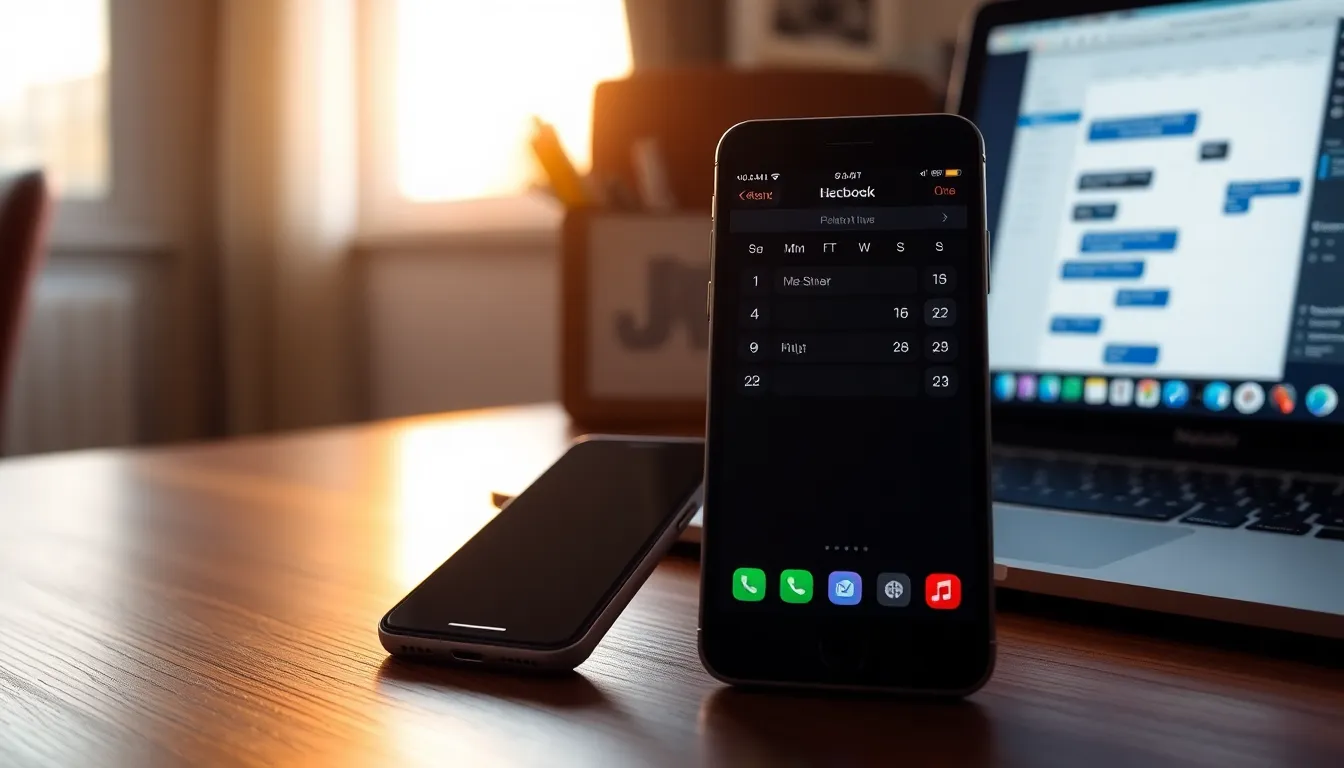In a world where juggling schedules feels like a circus act, syncing your calendar between your iPhone and Mac is the ultimate magic trick. Imagine effortlessly transitioning from your phone to your laptop without missing a beat. No more double-booking that dentist appointment and brunch with friends—unless you really want to, of course!
Table of Contents
ToggleUnderstanding Calendar Syncing
Syncing calendars between an iPhone and a Mac is essential for efficient time management. This process enhances organization and ensures consistency across devices.
Importance of Calendar Syncing
Calendar syncing prevents discrepancies between an iPhone and a Mac. Frequent updates reflect in real-time, eliminating the risk of missed appointments. Unified schedules keep users informed, reducing confusion and ensuring that all events are up to date. Coordinated planning across devices enhances productivity, making it easier to manage time effectively.
Benefits of Syncing Your Devices
Syncing devices offers numerous advantages that improve daily operations. Firstly, users access their schedules from any device, whether at home or on the go. Secondly, shared calendars facilitate collaboration among teams or family members, ensuring everyone stays on the same page. Increased accessibility contributes to better time management. Real-time notifications prevent last-minute surprises and help users prepare for upcoming commitments seamlessly.
Preparing Your Devices

Preparing devices for calendar syncing is crucial for a smooth experience. Users must ensure that their iPhone and Mac operate on compatible software versions.
Check Compatibility
Compatibility plays a key role in syncing calendars. iPhone users should confirm they’re running iOS 14 or later. Mac users need macOS Catalina or a newer version for optimal functionality. Ensuring both devices are connected to the same Apple ID is vital. Using the same ID allows for real-time updates and seamless transitions between devices. Without compatibility, sync failures may occur. Checking the settings on both devices can eliminate potential issues.
Update Software
Updating software keeps devices running efficiently. Users can check for updates on their iPhone by navigating to Settings, then General, and selecting Software Update. For a Mac, users should go to the Apple menu and click on About This Mac, then select Software Update. Updating eliminates bugs that may disrupt syncing capabilities. Ensuring the latest software enhances overall performance. Regular updates support security by addressing vulnerabilities effectively.
Step-By-Step Guide to Syncing
Syncing calendars between an iPhone and a Mac can enhance organization and streamline scheduling efforts. Follow these steps to seamlessly connect your devices.
Using iCloud
iCloud offers a straightforward method for calendar syncing. First, ensure both devices are signed in with the same Apple ID. Next, enable iCloud for Calendar on both devices through Settings on the iPhone and System Preferences on the Mac. Activate the Calendar toggle in iCloud settings. Changes made on either device reflect in real time, providing updates instantly. Regularly check for updates to maintain efficiency and security.
Using Bluetooth
Bluetooth also serves as a syncing option. Start by enabling Bluetooth on both the iPhone and the Mac. Open System Preferences on the Mac and choose Bluetooth to pair the devices. After pairing, open the Calendar app on both devices. Maintain synchronization by keeping the two devices within proximity for optimal connection. This method may not provide real-time updates like iCloud, but it’s effective for quick access to shared calendar information.
Troubleshooting Common Issues
Syncing calendars between an iPhone and Mac may sometimes encounter challenges. Identifying and resolving these problems helps users stay organized.
Syncing Problems
Various syncing problems can arise during the process. Users might notice that new events, edits, or deletions aren’t appearing on one device. This inconsistency often stems from using different Apple IDs or failing to enable iCloud for Calendar on both devices. Checking settings is crucial; users should verify that Calendar sync is enabled in iCloud settings. Additionally, ensuring that both devices are connected to a stable internet connection plays a significant role in maintaining synchronization.
Connection Issues
Connection issues frequently disrupt the syncing process. Often, users may experience connectivity drops, resulting in missed updates. Users should first confirm that both devices are on the same Wi-Fi network when using iCloud. Bluetooth connectivity can also facilitate syncing, but it necessitates both devices stay within range. If a connection is unstable, turning Bluetooth on and off can help. Checking for any software updates on both devices is essential, as outdated software can create further barriers to effective syncing.
Syncing calendars between an iPhone and a Mac is a game changer for anyone looking to enhance their organization and productivity. With real-time updates and the ability to access schedules from anywhere users can effortlessly manage their time. By ensuring both devices are set up correctly and using the same Apple ID users can eliminate discrepancies and avoid missed appointments.
Whether opting for iCloud or Bluetooth syncing the process is straightforward and offers significant benefits. Regularly checking for software updates and troubleshooting common issues can further streamline the experience. Embracing these syncing methods allows users to stay connected and informed, making scheduling a breeze.


